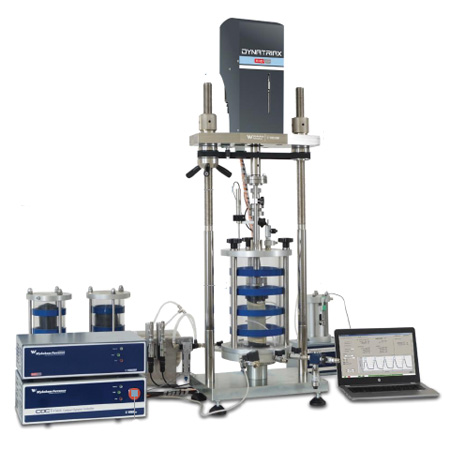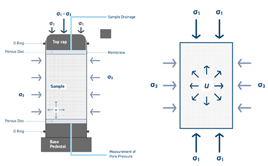Description
Dynatriax EmS benefits from CONTROLS Group new EmS "Electromechanical Servoactuation" technology.
EmS technology is environmentally friendly and clean to operate, requiring no compressed air or hydraulic oil. It offer excellent reliability, accurate testing and lower maintenance requirements. The intuitive design ensures it can be quickly and easily maintained, only requiring regular lubrication.
The system controls three closed-loop axes:
- Axial load/displacement
- Cell pressure up to 1000 kPa
- Back pressure up to 1000 kPa
The base system includes:
-
Reaction frame
- Robust 2-columns construction, stiff and compact
-
Electromechanical vertical load application
- high performance motorized actuator, 15 kN capacity, backlash free and noiseless
- sophisticated PID closed-loop control, ensuring load is reached fast, smoothly and accurately and then maintained with high level of accuracy. The submersible load cell delivers high accuracy from the lowest values
- Data acquisition, process and control
- PID control
Recently added features include manual and automatic amplitude control which compensate for small changes that may occupr in the system during cycling, ensuring that the required peaks are consistently reached. The improved tuning panel, with its more user-friendly interface, provdes all the tools necessary to optimize the system control during static and cyclic test stages.

 Enquiry:hkmarketing@epc.com.hk
Enquiry:hkmarketing@epc.com.hk 












